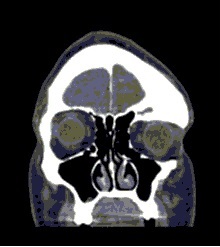Beware of Late Onset Esotropia
Case Study:
Dr Elaine Wong
Presentation
8 yo girl presents with 1 year history of intermittent esotropia which has become more constant over the last 3 months. She has been complaining of intermittent diplopia. There is no family history of strabismus and parents are not sure that whether they have seen the eye turn before age of 6 yo. She has not been complaining of any headaches, dizziness, weaknesses or have any systemic illnesses.
Examinations show that she has VAR 6/6 and VAL 6/6. She has an esophoria that breaks down to an esotropia of 20 dioptres both at near and in the distance. She has full range of eye movement. Anterior and fundus examinations are normal with no signs of any disc swelling. Cycloplegic retinoscopy show hypermetropia of + 3.00 OU.
What to do?
These clinical findings are common and familiar to most of us and may simply be a case of decompensated esophoria with or without accommodative component. We can simply send patient home with a pair of + 2.50 to help with the control of esophoria. Right?
Well, in children under 4 yo, that might be all you need to do. However, the unusual thing about this case is the age of onset – 7 years old. This is outside the normal age group that childhood esotropia occurs.
It is of utmost importance to look for any underlying neurological disorder and have a low threshold of neuroimaging.
Findings
In this case, a MRI brain was performed and she was found to have bony dysplasia in the orbital roof causing displacement of superior rectus and optic nerve.

Orbital bony dysplasia is an rare cause of esotropia in childhood.
Bony dysplasia typically presents in childhood or early adolescent and arresting at puberty. It is a benign, slowly progressive disorder of bone where normal cancellous bone is replaced by fibrous tissue and immature woven bone. Malignant transformation to sarcoma is rare ( 0.5%).
Debulking surgery for bony dysplasia may be required before development of nerve palsies or optic atrophy from optic canal compression.
Conclusion
Beware of late onset childhood esotropia – neuroimaging is required!!
What is this?
Click here for answer.
The location and presentation are most consistent of a dermoid cyst.
What are the differential diagnosis?
Click here for answer.
Mucocoele or encephalocoele
Discussion
Dermoid cyst is the most common space-occupying orbital lesion in the childhood. It is a result of sequestration of embryonic epithelium between orbital bones along suture lines. Ectodermal cells are “trapped” within a keratinizing epithelium and grow until they become clinically apparent. Therefore, it contains adnexal structures as hair follicles, sebaceous glands and sweat glands. The cyst cavity typically contains some combination of sebaceous fluid, keratin, calcium and cholesterol crystals.
The most common location for the dermoid cyst is anteriorly at the superolateral aspect of the orbit at the frontozygomatic suture. Medial lesions occur less frequently and often arise from tissue sequestered in the frontoethmoidal or frontolacrimal sutures. Due to their anterior location, these lesions do not usually cause globe displacement, but they can cause visually significant ptosis if they grow to a large enough size.
Posterior, deep lesions are more insidious, and often develop at the sphenozygomatic or sphenoethmoidal suture. Patients with deep lesions may present in late adolescence or adulthood with painless, progressive proptosis, motility deficits or diplopia.
Dermoids may also have both an anterior lobe and a deeper orbital lobe, giving rise to a “dumbbell” appearance.
Dermoid cysts can rupture with minor trauma and can spontaneously leak their cystic substances into surrounding soft tissues, causing a localized inflammatory response.
Surgical treatment is the only effective treatment modalities. CT or MRI scans to assess the intra orbital extent of the dermoid is necessary before surgery. Removal of the cyst in its entirety through a superior eyelid crease incision is preferred.